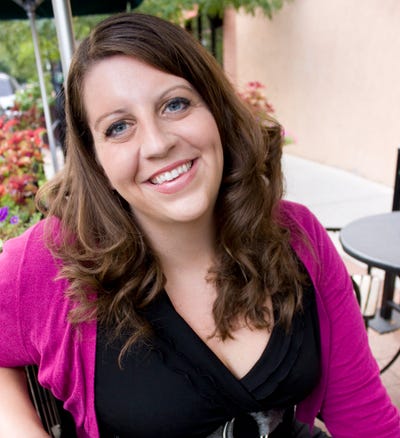What to know about USDA’s new organic regulations
Since taking effect March 19, the Strengthening Organic Enforcement rules have caught many companies off guard. Find out if your business must now be certified.
May 20, 2024

When the U.S. Department of Agriculture’s Strengthening Organic Enforcement (SOE) regulations went into effect March 19, many processors, producers, distributors, handlers, brokers, traders and exporters didn’t realize their companies needed to become certified organic to comply with the rule.
Wendy Johnson, director of safety and corporate compliance at Nelson-Jameson, a Wisconsin-based single-source supplier for food, dairy and beverage processing plants, almost made that mistake. Luckily, she caught it in time.
“I didn’t think that our company really fell under the ruling,” Johnson says. “We’re not a processor. We don’t open and repack anything. We’re basically a pass-through. We buy it from the manufacturers, put it on our shelves and we send it out the door.”
But after talking to Oregon Tilth, an organic certifier in Corvallis, Oregon, and a few other experts, Johnson realized she needed to get Nelson-Jameson certified to comply with SOE.
“Any companies that are organic handlers, like Nelson-Jameson, are now required to be certified,” Johnson says.
What’s SOE?
According to USDA, the legislation is needed because organic supply chains have become increasingly complex, leading to documented cases of organic fraud and gaps in oversight. The SOE rule strengthens USDA’s oversight of the production, handling and sale of organic products to improve traceability through the supply chain in the hopes of reducing fraud in organic products.
“It’s a big deal,” Johnson says. “It’s part of the food safety plan for the country, which says that they need visibility and traceability of all the products in the supply chain, and that includes organics. From the farmer in the field all the way to the end user, they want to see a line of traceability.”

Wendy Johnson director of safety and corporate compliance at Nelson-Jameson
So now, if a business is involved in the organic supply chain and not currently certified organic by an accredited USDA agent, it will likely need to become certified. This is the largest single change to the National Organic Program (NOP) standards since they were originally published more than 20 years ago.
“It further strengthens organic integrity throughout the supply chain,” says Scott Rice, senior director of regulatory affairs at the Organic Trade Association. “It sweeps in previously exempt operations, so more operations through the supply chain are pulled into certification, adding more transparency and accountability.”
The biggest change under SOE is what is meant by “handling,” says Rice. The definition now includes handlers who sell, process or package agricultural products, including but not limited to trading, facilitating, selling or trading on behalf of a seller or oneself, importing to the U.S., exporting for sale in the U.S., combining, aggregating, culling, conditioning, packing, containerizing, repacking, labeling (including private-labeling), storing, receiving or loading.
“You’re pretty much talking about the entire supply chain with a few exceptions,” Rice says, such as if a package is received, stored or prepared for a shipment in a sealed, tamper-evident packaging and remains in that form.
Get started today
From warehouses and central bakeries and kitchens that serve grocery chains to bulk grain handlers, commodity traders and ingredient suppliers, the SOE rule has a far-reaching impact.
Many operations have been caught off guard. “We’re still seeing a number of folks realizing that they need the certification now,” Rice says.
His advice: Start the process now. “Yes, you’re late,” Rice says. “However, you will be able to continue to trade if you put in an application today.”
Start by finding an organic certifying agent via USDA’s Organic Integrity Database’s Organic Certifier Locator, which lists nearly 80 authorized agents.
Think of it like hiring a contractor to work on your house, Rice says. Interview several certifiers to get a feel for what they do and whether they certify other businesses like yours. Understand each’s strengths and administrative capacity, especially if your company needs a lot of label updates, Rice says.
“It’s important to remember that every USDA-accredited certifier is going to be certifying to the same federal standards,” Rice says. “We don’t have a patchwork of different standards.”
That’s a common misconception, says Levi Fredrikson, applicant experience specialist at Oregon Tilth. In reality, USDA’s National Organic Standards Board makes the rules for NOP, not organic certifiers.
“We don’t make the rules; we help people navigate them,” Fredrikson says of Oregon Tilth. “I’m surprised by the number of people who don’t realize that.”
What the certification process is really like
Once Johnson realized Nelson-Jameson needed to comply with the SOE rule, she rushed to get the company certified in less than two months with Oregon Tilth. “A lot of our suppliers that we purchase from use Oregon Tilth, so I knew they had a good reputation,” she says.
The process included submitting paperwork, and then an auditor was sent to Nelson-Jameson to review its protocols. Nelson-Jameson also must do a traceability exercise for Oregon Tilth, provide how many dollars’ worth of organic product it has had in-house and apply for certification once a year, which includes a site inspection, Johnson says.
“We have to provide a list of what we are purchasing or carrying that is organic and supply that to our certifying agent, Oregon Tilth, once a year,” she says.
Johnson says the process was easier since Nelson-Jameson was already following a food safety plan under Safe Quality Food (SQF), with a Hazard Analysis and Critical Control Points (HACCP) plan that includes allergen, temperature and pest-preventive controls.
“So much of what we were doing under that plan was already ready for an organic certification audit,” Johnson says. “But if some companies do not do that already, it may be a little more difficult for them.”
Still, Johnson says, “I wish I would have known to do it a year ago versus pushing it through in a couple of months.”
Expect delays
As more companies pursue organic certification, it has created a backlog. According to Fredrikson, some certifiers have even closed applications because they’ve reached capacity.
Oregon Tilth increased its workforce about a year ago in anticipation of the “tsunami” of businesses that would need to be certified for SOE this year, says Fredrikson. Oregon Tilth is still taking on new clients, but it’s hard to tell how long it might take a company to be certified. “Hopefully less than a year,” Fredrikson says. “But definitely more than two months.”

Levi Fredrikson, applicant experience specialist at Oregon Tilth
Rice says many organic certifiers have stopped offering expedited services and that companies are typically looking at 90 to 120 days.
“Strengthening Organic Enforcement is going to be very good for the entire industry, for consumers, in the long run,” Fredrikson says. “However, in the short run, it is causing some pain points, some real frustrations.” For example, he says a company suddenly realizing that its importer needs to be certified can cause delays in getting product.
Keep meticulous records
Decades ago, Fredrikson says people would take a blank piece of paper and list their farming practices to get certified organic. Now, most certifiers provide an application form that spells out the exact information USDA needs.
But before an inspector ever comes out, there’s an initial review period. Preparing for that starts by keeping detailed records. “Don’t feel like you need to reinvent the wheel,” Fredrikson says. “Very often we see people with a good old-fashioned Excel sheet.”
Using lot numbers or internal tracking codes, track how many units you’re buying, how many you’re storing, where you’re storing the units, how many you’re selling, who you’re buying from and whether those suppliers are certified organic.
“What you want to demonstrate is that you're clearly tracking this certified-organic product as it is moving through your custody,” Fredrikson says. “And it remains certified as it enters your custody and leaves your custody while following all the rules for compliance.”
It’s also important for companies to know the certification status of each supplier. Obtain their organic certificates and make sure they were issued in the past year or two. That’s especially important for brokers, traders and importers, Fredrikson says.
Oregon Tilth triple-checks to make sure companies are compliant before scheduling an inspection. “If my team says these people are in good shape, we’ve got all the info to start the review, then we officially start the process to become an applicant,” Fredrikson says.
Then the review team will check the application. “Some people think they can simply send in an application and an inspector will show up,” Fredrikson says. “It’s not that simple.”
After Oregon Tilth completes its initial review and deems a client ready for inspection, an independent auditor will do a site visit “to observe and report on what’s happening in the organic system plan,” Fredrikson says. “They want to know, is the application being implemented properly?”
The last step is a final review based on the inspector’s report. “Then we issue an organic certificate provided that everything is compliant,” Fredrikson says. “Almost all of our clients that make it to inspection pass inspection.”
Fredrickson’s final advice: Don’t wade through the regulations and assume you’re exempt, or trust people in your supply chain. Talk to an accredited certifier directly about your business activities, he says, because businesses can call themselves a broker, logistics or freight forwarder—but USDA might define their activities differently.
“There's a lot of misinformation because of the buzzwords people use,” Fredrikson says. “It’s best to talk it out with someone on the front lines to determine if you need to be certified.”
Read more about:
OrganicAbout the Author
You May Also Like





